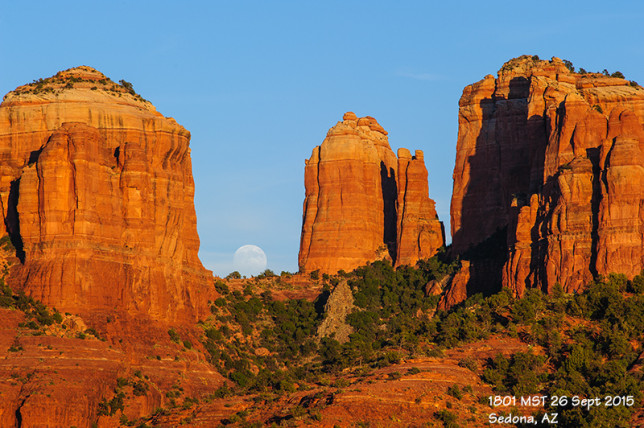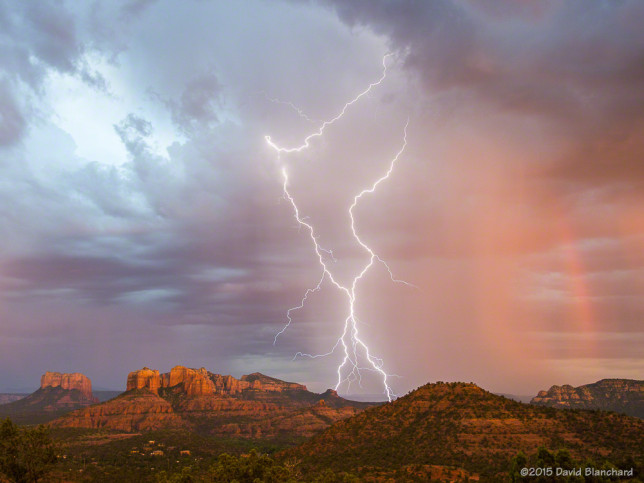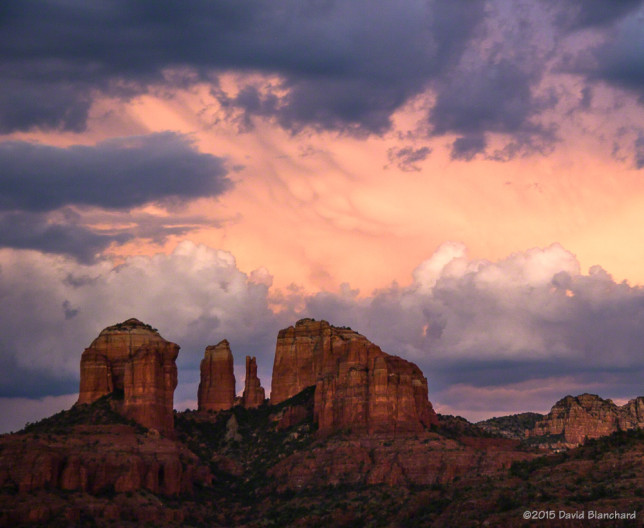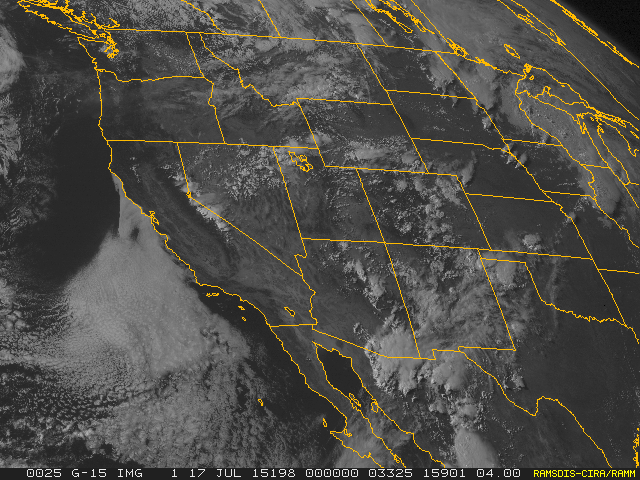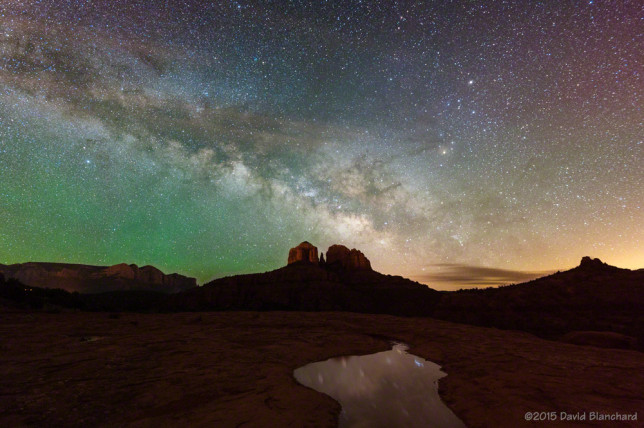A few weeks ago I attempted to photograph the nearly full moon as it rose from behind Cathedral Rock in Sedona, Arizona. On previous shoots of this type, I have used The Photographers Ephemeris (TPE) to determine where I should be located so that the moon will rise between the spires of this rock. My experience with TPE has been very good and typically I only have to make small adjustments to my position to get the perfect alignment.
For this event, I used TPE but I also wanted to test PhotoPills, an iPhone app. One of the features of PhotoPills is AR (“augmented reality”). What AR does is use the phone camera and superimpose the position of the moon and its track on the image seen by the camera.
As I approached my shooting location (as previously determined by TPE), I checked my position using PhotoPills. PhotoPills was telling me that my position needed to change; i.e., that I was already too far south and had to move back to the north. According to PhotoPills, the moon would rise to the south (right) of Cathedral Rocks. I was fairly certain at this point that TPE was right and PhotoPills was wrong.
Here’s where it gets really interesting. In the first photo, the moon has begun to rise to the left (north) of Cathedral Rock. At this time, PhotoPills was still indicating it would rise to the right (south) of Cathedral Rock (i.e., the far right edge of the photo).

That’s a pretty big error.
It turns out that PhotoPills can only be as good as the GPS and compass in the iPhone and those may not be very accurate. PhotoPills should not be blamed for what is an iPhone issue.
As the moon rose, I quickly moved to the south to attempt to get it between the spires but it was rising faster than I could reposition myself and I did not get the photograph that I wanted. That’s fine—as I have done this before and have a few great shots of the moon rising behind Cathedral Rock. (See, for example, Moonrise 1; Moonrise 2)
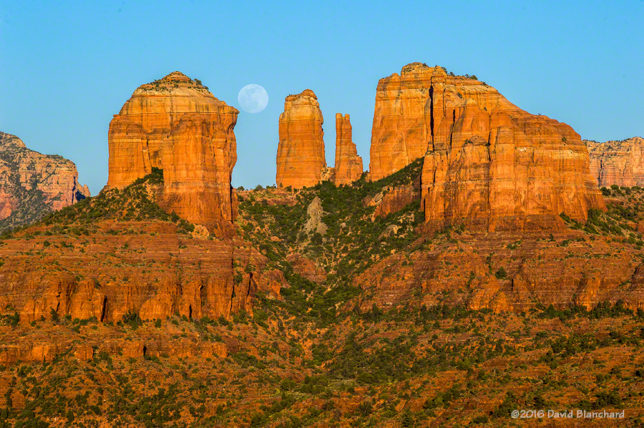
I’ll be using TPE for my next moon rise photo. I like PhotoPills for some of the other features it has—just not this one.



